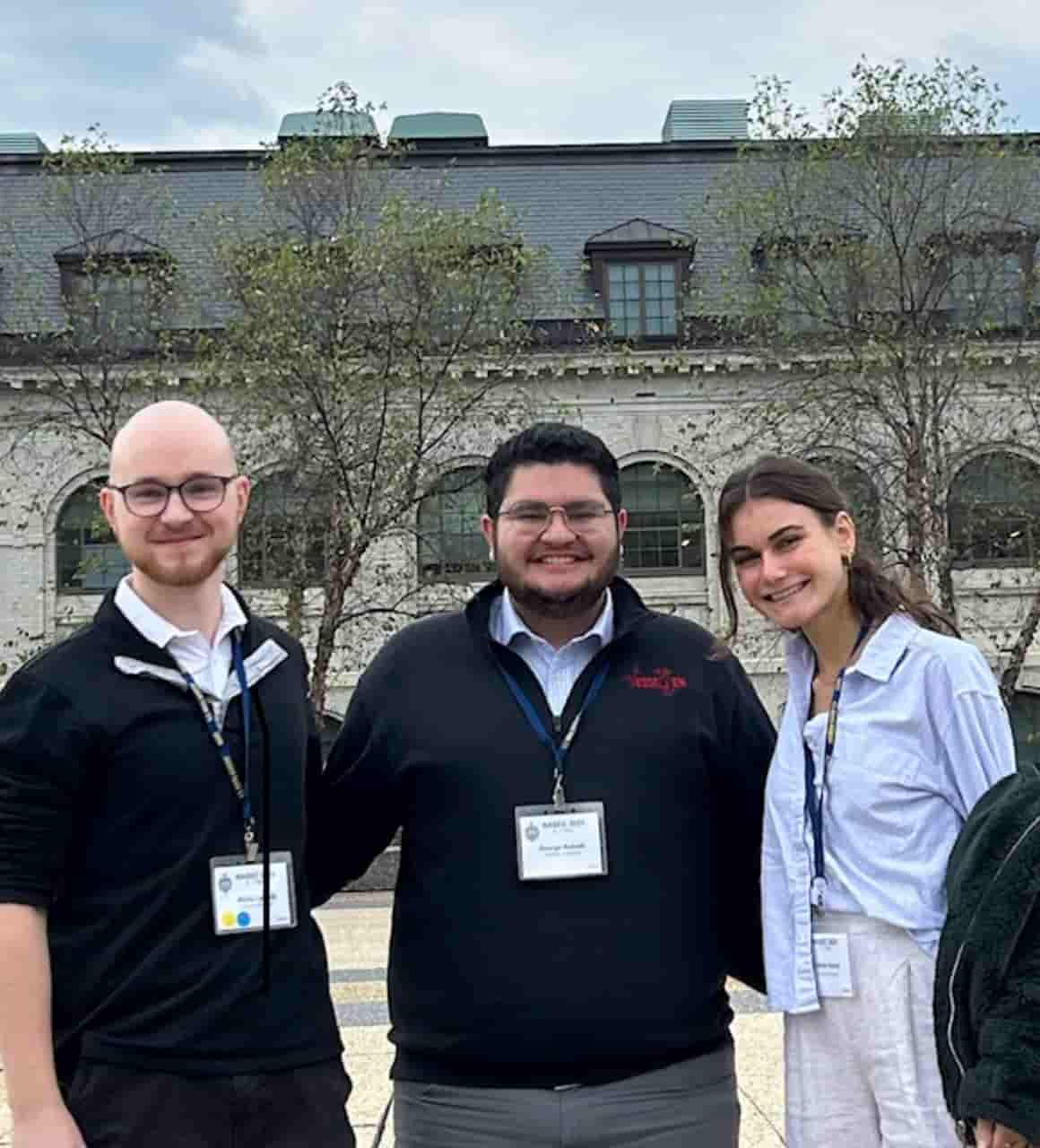
U-M BME Students Learn About Genetics at NASEC Event
Conference offers students chance to connect with peers, professionals

Conference offers students chance to connect with peers, professionals
Three U-M BME students–Natalie Hanby, Nikita Lebedz, and George Rabadi–attended the 12th Naval Academy Science and Engineering Conference (NASEC), from November 5-7, in Annapolis, Maryland.
This year’s event, titled “Genetics: Understanding and Addressing Today’s Challenges,” was organized around the themes of genetic technologies, use of genetic data, and genetics in public health.
The conference offered a forum for future Navy and Marine Corps officers to interact with peers from other colleges and universities, both civilian and military, from across the country. Participants engaged in discussion and research on key scientific and technical challenges facing the nation and the world.
“I was so excited when we were emailed us about this opportunity,” said BME senior Natalie Hanby. “I wanted to visit the Naval Academy and have the chance to interact with students there.”
Hanby, who is in the lab of BME Associate Professor Ariella Shikanov, highlighted some results from her research, which involves staining cell cultures. “My conference presentation focused on ovarian stromal cells,” she said. “I’ve been learning how to culture these cells and stain them so that we can characterize them. It’s like a mini project that I hope will supplement my PhD thesis, in which I am working to help Dr. Shikanov to develop an artificial ovary. Hopefully, I can support Dr. Shikanov’s research and the reproductive health research industry, in general, just because there’s such minimal focus on these cell types.”
Hanby said one highlight of the conference was the chance to hear from the new Director of the National Institutes of Health, Monica M. Bertagnolli, M.D.–just days before she was officially announced in her new position. “I felt so inspired to continue working in this research field, and I hope that I can continue surrounding myself with people like her and the incredible students I met at these sessions. It was truly an honor to be in her presence and their presence.”
Lebedz, who is a junior in BME, aspires one day to pursue a PhD and then conduct research or obtain a professorship. “I’m curious to see how neurons could be potentially manipulated with genetics, aside from just through electrode stimulation,” he said. He added that one of the most interesting conference seminars he attended focused on work being done in the genetics of plants for better food growth and better carbon utilization.
“That doesn’t imply GMOs,” he noted. “So those plants are not genetically modified. You’re increasing the viability of the plant, for example, by making the roots deeper, allowing more carbon fixation to occur from the atmosphere. I thought that was really cool because the prospects of such genetic modification or genetic selection could bring about better food security. You could have more food being grown from the same patches of land, meaning that less land could be utilized for agricultural purposes and much more land can be distributed for other means. I thought that was an impressive way to use a technology that is kind of recent for the betterment of the world.”
Rabadi, a BME Master’s student, agreed with Hanby and Lebedz about the importance of attending conferences to connect with other students and professionals in the field. “More than anything, I think the biggest takeaway from the conference was meeting and talking to these amazing people,” Rabadi said. “We’re all invested in this kind of science and what it means for the world. This conference provided a forum to connect with others sharing my interests and it gave us all the chance to learn from each other.”